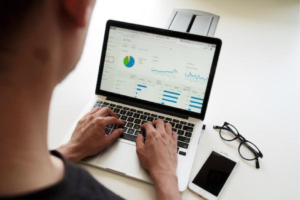In today’s fast-paced digital world, monitoring business performance is critical in making informed decisions that drive growth. Luckily, advancements in technology offer new tools, notably real-time dashboards, that simplify and streamline this task. However, knowing how to effectively use these resources is equally important as having them. In this article, we will guide you on how to use real-time dashboards to monitor key performance indicators (KPIs).
Understanding the Concept of Real-Time Dashboards
Before one can fully benefit from a live dashboard, understanding its core concepts is necessary. A dashboard, in its most basic form, is a tool that displays data visualizations based on specific metrics. Its principal aim is to promote data-driven decision-making by presenting the data in a comprehensible and accessible manner.
The term “real-time” refers to the dashboard’s ability to provide updated data as it becomes available. This means that the insights generated are always up to date, providing the capability of making well-informed decisions on the spot. That is the power of the real time dashboard.
Understanding how real-time dashboards work prepares you to optimally utilize them in your business. They provide a quick overview of your business’s performance, enabling swift and informed decision-making.
This only scratches the surface of what real-time dashboards can do. So, let’s delve deeper into how they can steer your business in the right direction.
Identifying Key Performance Indicators for Business
The effectiveness of a live dashboard is fundamentally determined by the quality and suitability of the data it displays. This underscores the importance of determining appropriate key performance indicators (KPIs) for your business.
KPIs are metrics that gauge the performance of various aspects of a business. They give insights into how well a business is achieving its objectives. They differ from one field to another, based on industry-specific benchmarks and goals.
Without well-defined KPIs, a live dashboard might present irrelevant information, complicating the decision-making process instead of simplifying it. Therefore, the first step is to outline the business objectives clearly, then identify the KPIs that align with these goals.
The chosen KPIs should be monitored regularly. This is where real-time dashboards come into play, opening doors to a wealth of data for analysis and strategy adjustments.
Setting Up Your Real-Time Dashboards to Monitor KPIs
After identifying the KPIs relevant to your business, the next step is configuring your live dashboard to monitor them meticulously. Set up your dashboard to display the data in a way that everyone within your organization can understand.
While setting up your dashboard, convenience, and ease of access should be your top considerations. The goal is to have decision-makers access vital information readily, enabling them to react promptly to any changes, perceived opportunities, or threats.
Correct configuration of your live dashboard is equally critical in successful data interpretation. This includes selecting suitable data visualizations, arranging data sensibly, and ensuring the dashboard is user-friendly.
Remember, a well-set-up live dashboard is your ally in achieving efficient business monitoring. So, take your time during this step to ensure maximum benefits.
Interpreting Dashboard Data for Effective Decision-Making
The advantage of having a live dashboard lies in the subsequent data interpretation. This step allows the transformation of raw data into actionable insights. Nonetheless, this requires suitable analytical techniques and an understanding of the business environment.
With an efficient live dashboard, you can identify trends and patterns that could be beneficial or detrimental to your enterprise. These insights facilitate informed decision-making, which ultimately improves business performance.
The insights drawn from your live dashboard should steer the design and implementation of your business strategies. They serve as a map, guiding your business toward achieving your set goals.
Moreover, monitoring the success of these strategies becomes effortless with the same tools. Any deviations from expected performance can be instantly detected and acted upon, protecting your business from potential losses or opportunities.
Altogether, the integration of real-time dashboards for monitoring KPIs in business operations offers a pathway to improved performance and growth. Understanding dashboards, identifying unique KPIs, and regularly monitoring dashboard data are all subprocesses that build toward an effectively managed organization.















